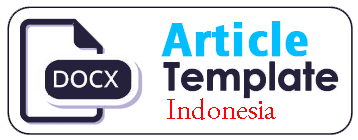Analysis of the relationship between human development index toward environmental quality index in South Sulawesi
DOI:
https://doi.org/10.54849/monas.v2i1.14Keywords:
Regional Development, HDI, EQI, EnvironmentAbstract
Regional resource development has a dual role in relation to capital as economic growth (resource based economy) and at the same time as a life support system (life support economy). Regional development performance in Indonesia is generally measured based on the Human Development Index (HDI) which focuses on the size of education (knowledge), health (healthy and long life) and people's purchasing power (decent life). The Human Development Index is formed from several indicators that do not yet cover all dimensions of human development as formulated by the United Nations Development Program (UNDP). In the context of sustainable development, the success of regional development is always associated with environmental carrying capacity as measured by the Environmental Quality Index (EQI). The linkages between human and environmental aspects in regional development are interesting to be reviewed in more detail, especially in South Sulawesi Province as a portrait of regional development in Indonesia. The analytical method used is quantitative based on secondary data, both in the form of literature review and correlation analysis of the relationship between HDI and EQI in the same year and the same region as novelty that has never been studied before. The relationship between HDI and EQI will be analized by Bivariate Pearson. The purpose of this study is to look at the impact of policies to encourage the increase in HDI toward IKLH that occurs. The analysis shows that in South Sulawesi the HDI value is not always directly proportional to EQI depending on certain factors.
Downloads
Published
Issue
Section
License
Authors who publish in this journal agree to the following terms:
- Authors retain copyright and grant the journal right of first publication with the work simultaneously licensed under a Creative Commons Attribution-NonCommercial-ShareAlike 4.0 International License that allows others to share the work with an acknowledgement of the work's authorship and initial publication in this journal.
- The journal allows the authors to hold the copyright without restrictions and to retain publishing rights without restrictions.
- Authors can enter into separate, additional contractual arrangements for the non-exclusive distribution of the journal's published version of the work (e.g., post it to an institutional repository or publish it in a book), with an acknowledgement of its initial publication in this journal.








